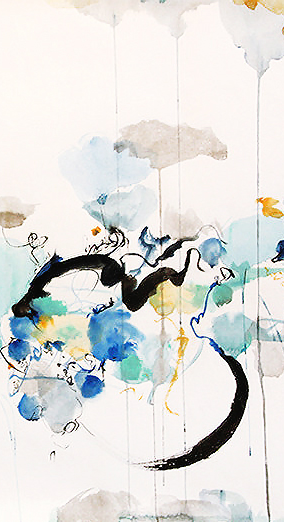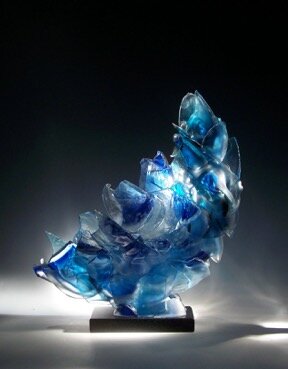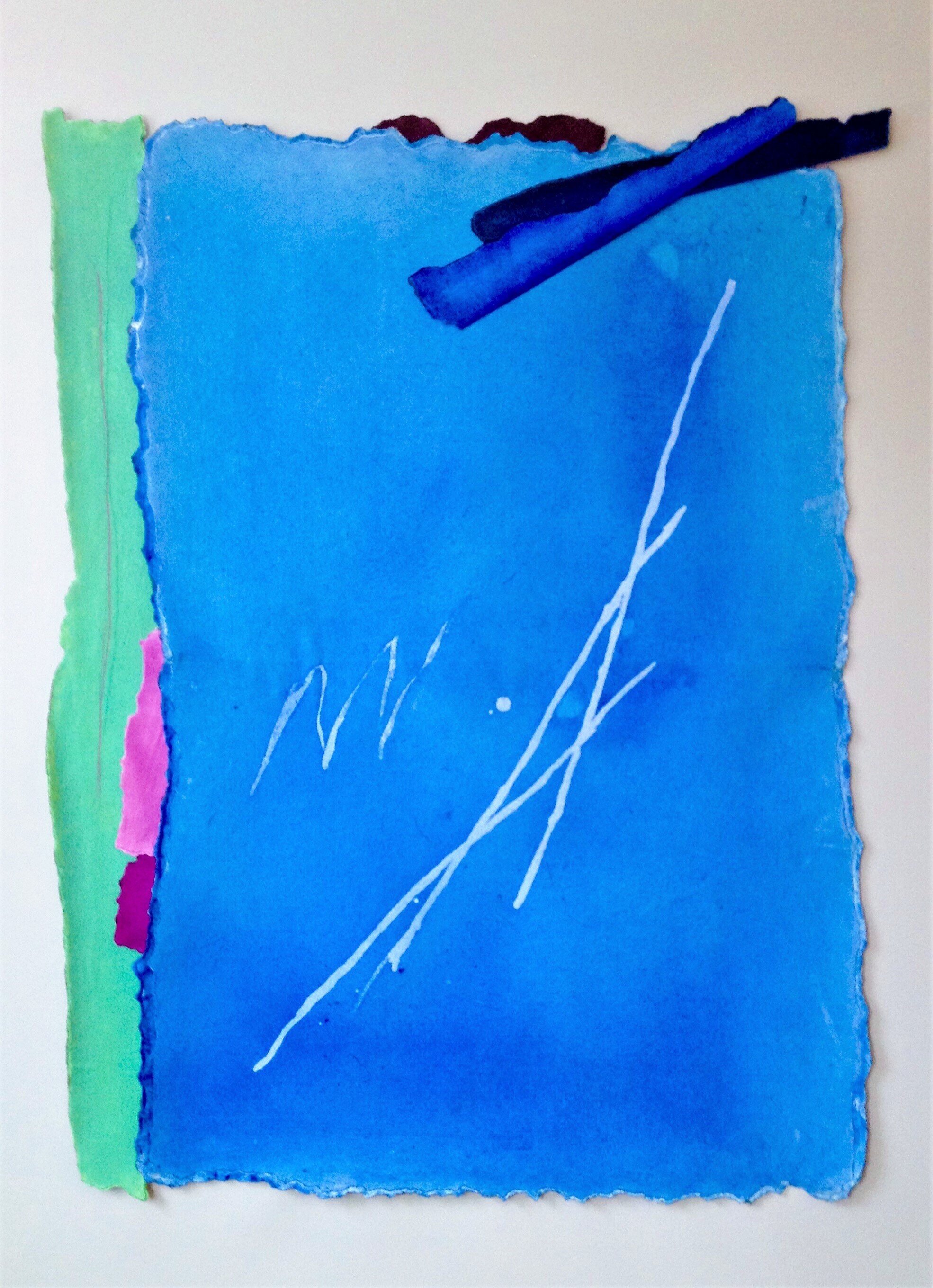The Theory of Color Pt. 2 | 2018
In all of the elements of art, perhaps the most obvious would be the influence of color. Due to colors’ visceral characteristics, the interpretation of the artist’s intent is often immediate because of the cultural and emotional associations induced by a particular color or lack thereof. Artist’s Proof will be exploring the intricacies of color in ‘The Theory of Color’ - a two-part exhibition this Spring.
Presenting only white monochrome sculptures and paintings in April, we consider the philosophical, poetic and spiritual associates attributed to a color that is often perceived as ‘negative space’. The paintings and sculptures presented in this exhibition predominately use white or black, which often draws attention to the other aspects of the artwork such as the techniques, materials, textures, and forms used by the artists. Each artist engages their technique to this concept of working within the monochrome, reducing their art to its elemental form. At the opening reception on April 14, 2018, from 4-6 pm, Washington, D.C. based artist Craig Cahoon will be conducting a workshop on the monochromatic interference paint he employs within the presented series.
In May, the gallery switches direction to present works in which color and the attributed emotions to them is the predominant influence on the artists’ intention. The highly abstract works encourage the viewer to interpret the work through their impressions, cultural influences and memories associated with the colors they view. Iranian-American painter Saya Behnam (see figure 1) will be conducting a workshop on how she sources, tests and uses natural pigments, such as saffron and crushed lapis lazuli stones, in her art at the opening reception on May 5, 2018, from 5-8 pm.Details of Part Two follows:
Part Two: Color and Intent in Abstraction
Saturday, May 5 from 5-8 pm | Artist Demonstration to begin at 5:30
In Part-Two of the Theory of Color, we direct our attention to color and the artist’s intent through abstraction. The works themselves without references to people or objects in the external environment. As a result, the viewer uses the most apparent element - color, to interpret the work through their impressions; memories associated with the colors they view. Featuring works by Saya Behnam (Iranian-American), Robert Schoenfeld (American), Kikuko Morimoto (Japanese) and Caleb Nichols (American), Artist’s Proof will be presenting an exhibition that brings into question how we interpret and conceptualize the world around us.
Saya Behnam, born in Tehran, Iran, works bridge three artistic movements: Western Abstract Expressionism, Chinese ‘Literari,’ and Persian Calligraphy. Reinventing the traditional approach to these historical art movements, she reveals a part of herself while creating a distinctly unique aesthetic (see figure 2). Using unconventional mediums, she creates her works utilizing the pigments extracted from natural flowers and spices such as borage, saffron, tea, etc. While iconic to the Middle East landscape and culture, this creates a deepening of the organic nature of her work. These ‘natural’ colors are prepared and behave differently than synthetic paints. The dripping colors, natural shapes and layered transparency in her work allow the complexity of each of these cultures to shine. The influence of meditation transcends through Behnam’s work - not only through her combination of natural elements but in the process of her painting. Each brush stroke is unique to the artist’s hand and deeply related to how she is feeling at the moment. Those emotions carry through the work as the viewer becomes fascinated with the quick brush strokes and the intricacies of the various colors.
Kikuko Morimoto, born Kobe, Japan, currently resides in New York City. Her work is a reflection of these two cultural influences and a personal journey of self-discovery and meditation. Working with high-quality Japanese paper, she reintroduces the tradition of craftsmanship that stretches back centuries (see figure 3). Through her dynamic use of highly saturated colors, her abstract work draws a connection between the of rich colors used in Japanese kimonos to the New York discipline of color theory which arose in popularity in the late 1940’s through 1960’s under artists like Josef Albers and Ellsworth Kelly. Kikuko’s carefully arranged compositions are intentionally organized to find beauty and freshness in the interplay of color. Morimoto uses colors to reflect organic feelings she has at the moment. Morimoto’s compositions combine similar colors in a piece to indicate a sense of serenity and quietness or layer complimentary colors in a polychromatic painting to express a feeling of excitement or urgency. Her use of paper gives the work a unique textured feel and adds three-dimensionality to the works. Morimoto uses her art to connect with the mystery and fluidity that she feels while meditating. Meditation allows her to connect with what lies deep inside herself and the essence of what makes her unique.
Other artists to be featured include recent additions to the gallery watercolor painter Robert Schoenfeld and glass artist Caleb Nichols.
Schoenfeld's abstract watercolor pieces elicit a specific vibration that has a profound effect on the emotions and mood of the person viewing the composition (see figure 4). By placing a variety of colors together, the power of this effect is enhanced. As he paints, Schoenfeld select colors that create a healing visual environment of beauty, joy, power, refinement, sensuality, transcendence, serenity, and delight. Schoenfeld’s work has been collected throughout the United States and Internationally; Including Nordstrom, IBM London, Sheraton Hotel China, and Boeing Corporate offices.
Caleb Nichols, influenced by Japanese art, creates glass that is distinctive of it rough dynamics, with many pieces reaching sizes beyond 30 inches in width. To create his work, Nichols uses a combination of blowing and fusing. He blows vessel forms, hits them with a hammer, and then joins the choice pieces together into a different composition. The color sync is discovered to be in harmony and casts a prism of light beyond the physical sculpture furthering this discourse on color and the viewer's reaction (see figure 5).
Please join us for the opening reception Saturday, May 5, 2018, at 5 PM at Artist’s Proof located at 1533 Wisconsin Ave NW, Washington D.C. 20007. Iranian-American painter Saya Behnam will be conducting a workshop on how she sources, tests and uses natural pigments, such as saffron and crushed lapis lazuli stones, in her art at the opening reception on May 5, 2018, from 5-8 pm.


